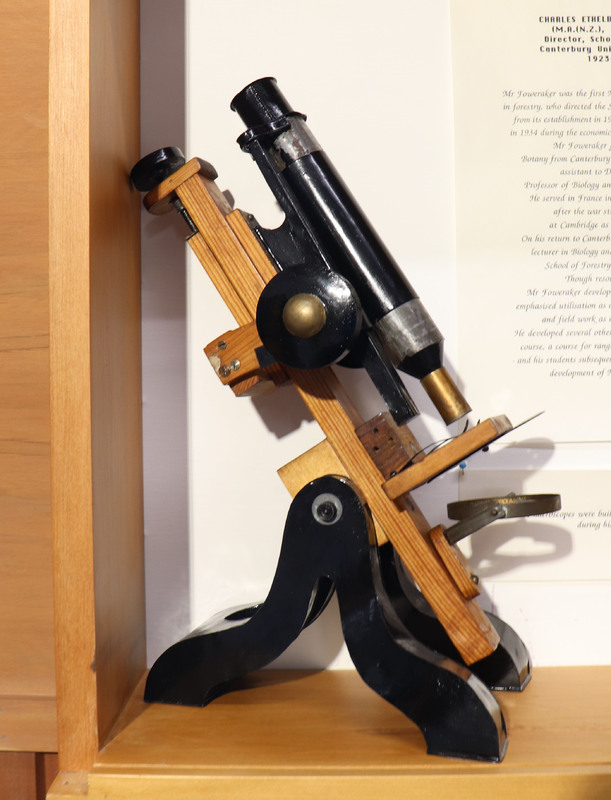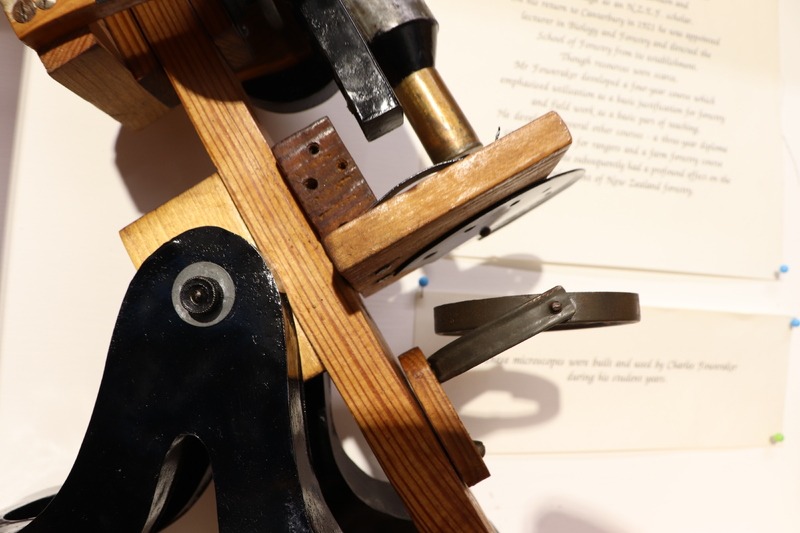Microscope
The Canterbury College Collection houses twelve microscopes that were used by students and staff at the original College site on Worcester Street. These microscopes were used for science based subjects such as Geography and Forestry. Due to the fundamental role of this equipment in (basic) lab work and research, the majority of microscopes were externally sourced. Two models, however, stand out as examples of innovative thinking as they were made in-house at Canterbury College.
Charles Foweraker (1886-1964) studied and taught at Canterbury College, however it was during his time as a student that he built two microscopes. Both models are made up of a metal scope and wooden stand, with one stand painted black to create a uniform finish and the other varnished to protect the exposed wood. While the microscopes are similar in function, they have many visual differences (however, it is unknown whether this was a practical or aesthetic choice by Foweraker).
Foweraker’s passion for education and science continued beyond his years as a student. From an early age Foweraker expressed an interest in teaching and simultaneously developed an enthusiasm for natural history and botany. After several years of going back and forth between teaching and studying, Foweraker found himself in England taking a course in Forestry. This overseas interlude proved pivotal for the future of Canterbury College as it was considering opening a School of Forestry. Prior to this, the College had only one subject school (the School of Engineering) and Forestry had not yet entered New Zealand as a professional course of study.
In 1924 Canterbury College officially opened the first School of Forestry with Foweraker named Lecturer in Charge. To this day, the University of Canterbury is the only university institution in New Zealand to offer a professional degree in Forestry (with Toi Ohomai Institute of Technology being the only other tertiary based institution to offer the course).
Foweraker’s enthusiasm for Botany and Forestry, and his dedication to the betterment of education saw him introduce new, innovative ways of learning. He was both an advocate and pioneer of a field-based learning environment for students. Today, the University’s field station at Cass and a nearby peak named Mount Foweraker (after Charles Foweraker) stand as physical reminders of Foweraker’s contribution to education and learning.


